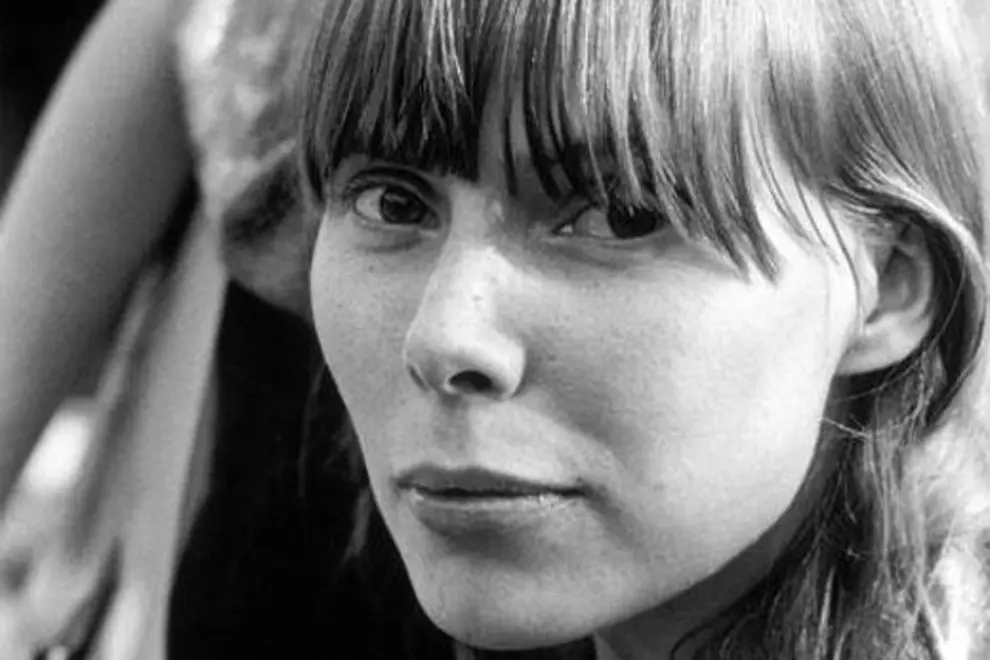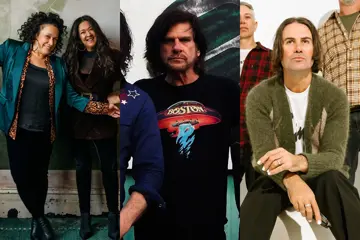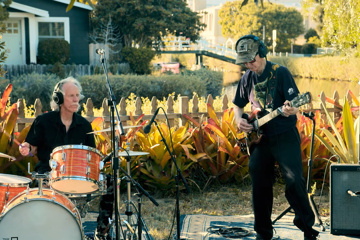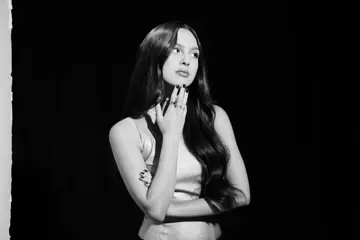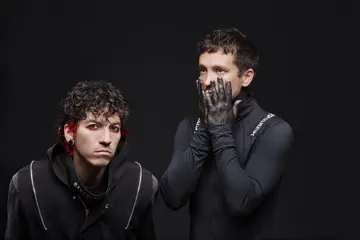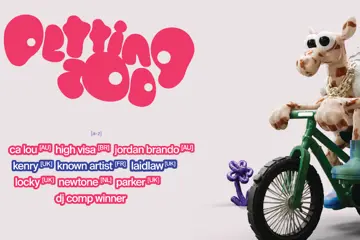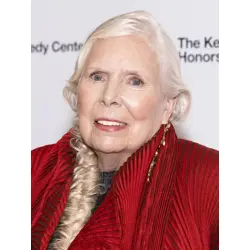 Joni Mitchell
Joni MitchellOn the day after Joni Mitchell’s remarkable performance at the Grammys of Both Sides Now, three versions of the song entered the US iTunes chart – a sign the 81-year-old has been discovered by yet another generation.
Since 1998, she has only released one new album of new material. But her reputation continued to soar as everyone from Taylor Swift to jazz legend Herbie Hancock (whose 2007 album River: The Joni Letters was mostly of her songs) rained praise on her.
Madonna said: "I was really, really into Joni Mitchell. I knew every word to Court And Spark; I worshipped her when I was in high school. Blue is amazing. I would have to say of all the women I've heard, she had the most profound effect on me from a lyrical point of view."
As a teenager, Bjork learned both Don Juan's Reckless Daughter and Hejira "by heart", marvelling how bold and inventive they were.
“She was creating her own universe; she wasn't a guest in a man's world. I liked music that was more modal, more chromatic. There is more room for the singer to improvise."
Janet Jackson stated, "As a kid I was drawn to Joni Mitchell records. Joni's songs spoke to me in an intimate, personal way."
Don't miss a beat with our FREE daily newsletter
Joni Mitchell started in the folk clubs of Canada before moving to the US, where she became "one of the greatest songwriters ever”, said Rolling Stone. Even before her first record deal in 1968, other artists were recording her songs.
A poet and visual artist, she produced or co-produced her records, an achievement for a female artist at the time, and made masterpieces like Blue and Court And Spark. Through the ‘70s, she expanded to jazz.
Being affected by polio as a nine-year-old left her left hand weakened, forcing her to devise alternative tunings, which in turn gave her songs a unique sound. In 2015, the rupture of a brain aneurysm in 2015 led to a long period of recovery and therapy for the heavy smoker.
Inspired by her resurgence, The Music has rounded up the 12 Most Remarkable Joni Mitchell songs.
1. Both Sides Now (1969)
Both Sides Now was a hit first for fellow folk artist Judy Collins in 1967 and won a Grammy. Joni, who never liked that version, would record it on her second album, Clouds, two years later.
The optimistic song was about ambition and the gap between illusion and reality. It had its roots in two stories. One was having to give away her first child, Kelly, in 1965. This was also brought up in Little Green from Blue and Chinese Café from Mingus. The two reunited in 1997.
The other was a passage from Canadian American writer Saul Bellow’s 1959 novel Henderson The Rain King, about a wealthy middle-aged, unfulfilled man, Henderson, who journeys to Africa to find his purpose in life.
Mitchell was reading the book on a flight and came to the passage where Henderson is flying to Africa. “He looks down and sees these clouds. I put down the book, looked out the window and saw clouds too, and I immediately started writing the song. I had no idea that the song would become as popular as it did.”
Mitchell re-recorded it in 2000 with an orchestra and jazz flavour, with a worldweary vocal which pressed the line “I really don’t know life at all.”
2. Woodstock (1970)
Joni wasn’t actually at the legendary Woodstock festival held in August 1969 on a dairy farm in Bethel in upstate New York.
Her manager thought it was more beneficial for her to appear on TV’s Dick Cavett Show instead. So she watched news reports from her hotel room in New York City, with first-hand stories from her then-boyfriend Graham Nash, who had played there with Crosby Still Nash & Young.
Because she wasn’t there, she could bypass the reality of the mud bath chaos that resulted when 500,000 people turned up to an event meant for 50,000. She could celebrate it as a mini utopia of the hippie dream with poetic bursts as:
We are stardust, we are golden
And we've got to get ourselves back to the garden
And everywhere there was song and celebration
And I dreamed I saw the bombers
Riding shotgun in the sky
And they were turning into butterflies
Above our nation
She later said, "Woodstock, for some reason, impressed me as being a modern miracle, like a modern-day fishes-and-loaves story.
"For a herd of people that large to cooperate so well, it was pretty remarkable, and there was tremendous optimism. So, I wrote the song Woodstock out of these feelings."
Crosby Still Nash & Young had the hit with a rocked-up version (trivia fact: Jimi Hendrix shaped the arrangement and played bass on early versions) which reached #11 in America, #19 in Australia and #3 in Canada.
Joni’s folk rendition was the B-side of Big Yellow Taxi and on the album Ladies Of The Canyon.
3. Court And Spark (1974)
By the time it came to her sixth album, Joni’s music was allowing her jazz leanings to come to the fore, with open tunings and complex harmonies.
For the Court And Spark album, she brought in a number of jazz players. One of them was drummer John Guerin who played with saxophonist Tom Scott and the L.A. Express.
The pair had a tumultuous affair during its making. “He was a drummer, and we courted and sparked”. The title song is about him, with superb lyrics about his “madman’s soul”. The album was her bestselling to date and was nominated four times for the 1975 Grammys.
4. Big Yellow Taxi (1970)
Heavy lyrics about the environment and corporate greed were matched with a singalong pop melody and gave Joni her biggest global single (#6 in Australia).
She told the Los Angeles Times it was written during her first visit to Hawaii. “When I woke up the next morning, I threw back the curtains and saw these beautiful green mountains in the distance.
“Then, I looked down, and there was a parking lot as far as the eye could see, and it broke my heart […] this blight on paradise. That's when I sat down and wrote the song.”
The lines "They took all the trees and put 'em in a tree museum / And charged the people a dollar and a half just to see 'em" were about Honolulu’s 13.5 acres (5.5 ha) Foster Botanical Garden, which has a thousand tropical plants, some rare and endangered.
In a twist about losing everything by taking them for granted, she weaves in about her boyfriend leaving her for good in a big yellow taxi.
It’s been a chart hit also for The Neighbourhood (1970), Amy Grant (1994) and Counting Crows (2002) and sampled on Janet Jackson's reggae-R&B Got 'Til It's Gone (1997) which featured Mitchell and rapper Q-Tip.
Jackson rang her personally to ask if she could sample her song. “If Joni was going to say no to me, I had to hear it from her myself.”
5. Blue (1971)
The title track of one of her masterpieces is about how finding ways to fill a void can sometimes edge to the dark side. It’s about James Taylor who was going through smack addiction while they were stepping out.
It came from a period when she wanted to be more honest and vulnerable with her following, so it “nourishes them, and changes their direction, and makes lightbulbs go off in their heads.”
Its bravery and dark imagery saw it sampled in Mac Dre’s Song 4 U, Blu and Exile's My World Is… and A.R. Kane’s Catch My Drift.
6. You Turn Me On, I’m A Radio (1972)
When her managers David Geffen and Elliot Roberts asked her to write a radio song for For The Roses, her first album for their new Asylum Records, she mocked it with radio jock slang.
It did become a minor hit, a Top 30 in the US and Canada, and reached #37 in Australia. Mitchell wasn’t impressed. She sniffed to Vogue, “I was an albums artist, not a singles artist. And that’s got nothing to do with the hit parade.”
7. The Circle Game (1970)
This was written as a response to her good friend Neil Young’s Sugar Mountain which he wrote on his 19th birthday on November 12, 1964. Sugar Mountain was a teen club that he couldn’t go to because he was now “too old”, and Young was despairing of growing old.
Joni was 23 years old when she wrote it. She wanted to give Young, herself, and her generation a dose of hope. "So the years spin by and now the boy is twenty / Though his dreams have lost some grandeur coming true / There'll be new dreams, maybe better dreams and plenty / Before the last revolving year is through."
It was recorded by folkies Buffy Sainte-Marie, Ian & Sylvia and Tom Rush before she became a recording star. Her own version appeared in 1970’s Ladies Of The Canyon. It had backing vocals by Crosby, Stills & Nash credited to The Lookout Mountain United Downstairs Choir.
8. Come In From The Cold (1991)
If The Circle Game was about dreams as a young person, Come In From The Cold was about 48-year-old Joni looking back at the idealism of the ‘60s and how things panned out. “We had hope/The world held promise/ But then absurdity came over me/And I longed to lose control.”
She also smiles at the contemplation of her place as a singer and voice of a generation: “The question now is whether people can enjoy the singing of a middle-aged woman, even though the consensus is that if you don’t evoke wet dreams, you’re in trouble.”
9. Chelsea Morning (1969)
Joni Mitchell was 24 in 1967 when she split from her husband, Chuck Mitchell, and moved from Detroit to New York to play its coffeehouse scene.
Home was an apartment on West 16th Street in the area of Chelsea. “It was a very young and lovely time... before I had a record deal.”
The innocence was captured in the line “rainbow on the wall”, a mobile made out of bits of coloured glass she found in the alleyway outside a club. “The sun would hit the mobile and send these moving colours all around the room. As a young girl, I found that to be a thing of beauty.”
It was recorded by Judy Collins, Fairport Convention, Dave Van Ronk and Jennifer Warnes before Joni cut it for her second album.
Trivia fact: former US President Bill Clinton and his wife Hillary named their daughter after the song.
10. That Song About The Midway (1969)
Joni Mitchell and David Crosby were dating in 1967. He introduced her to influential names to boost her career and produced her first album.
She was aware Crosby was not the most faithful. But when he moved in with an ex-girlfriend, she exploded. She wrote the song and played it to him at a party at the home of Peter Tork of The Monkees.
Crosby revealed in David Browne’s The Wild, Definitive Saga of Rock’s Greatest Supergroup: “Joni was very angry and said, ‘I’ve got a new song’ “It was a very ‘Goodbye David’ song.
“She sang it while looking right at me, like, ‘Did you get it? I’m really mad at you. Then she sang it again. Just to make sure!” But the two remained lifelong friends.
11. The Sire Of Sorrow (Job’s Sad Song) (1994)
The seven-minute The Sire Of Sorrow (Job's Sad Song) analyses the suffering of the Biblical figure Job through the taunts of bullies. “What have I done to you that you make everything I dread and everything I fear come true?”
It came from Turbulent Indigo, an album whose title was inspired by Dutch artist Vincent van Gogh’s mental anguish. It included Magdalene Laundries, about the trauma of Irish women put to work in the laundries of asylums run by the Roman Catholic Church.
12. Paprika Plains (1977)
From the free-flowing double album Don Juan's Reckless Daughter, the 16-minute jazz improvisation sees Mitchell narrate her early childhood on the Canadian plains, the lament of indigenous people about lack of hope and alcoholism, and a dream based on an encounter with Bob Dylan, at a party on The Queen Mary.
Mitchell recalled: "After a long silence he said, 'If you were gonna paint this room, what would you paint?' I said, 'Well, let me think. I'd paint the mirrored ball spinning, I'd paint the women in the washroom, the band...'
“Later, all the stuff came back to me as part of a dream that became the song Paprika Plains."

